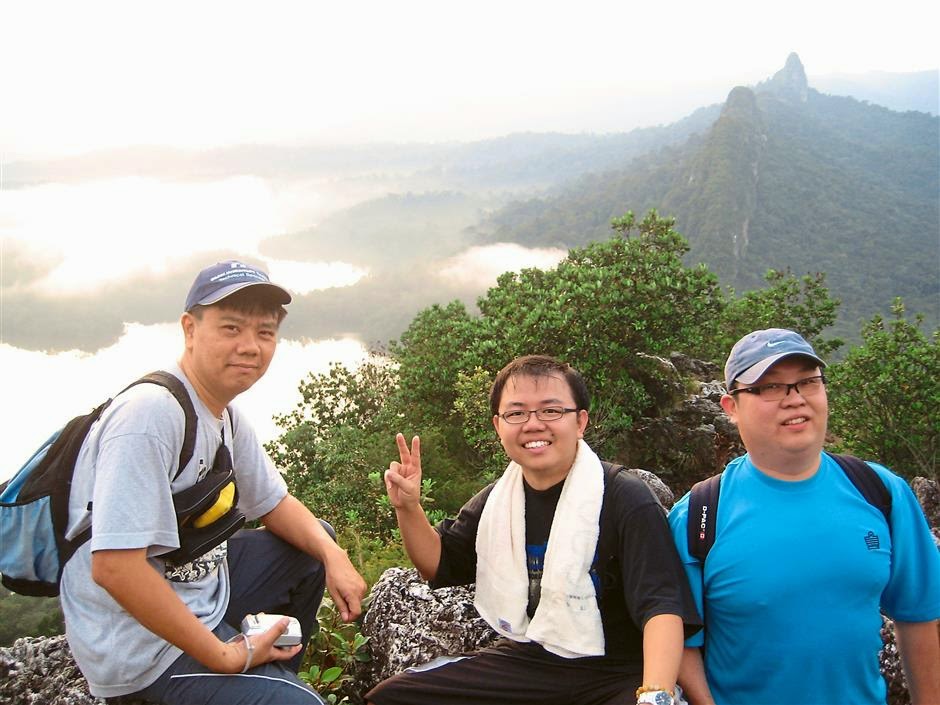 The arduous Pacific Crest Trails offered the author of The Girl In The Woods the chance to take back control of her life after being raped.
The arduous Pacific Crest Trails offered the author of The Girl In The Woods the chance to take back control of her life after being raped. The first time I heard of the Pacific Crest Trail was at the recent George Town Literary Festival, when a friend expressed interest in hiking it. Stretching across mountains running along the western coast of the United States, it is a challenging trail that should be attempted by only the hardiest of hikers.
My own experience with hiking is limited to beginner trails in national parks and forest reserves. Hiking is fun, but I know well enough of its dangers – years ago, another friend of mine had gone hiking and disappeared. The friend at the festival who wanted to hike the Pacific Crest is a man in his 30s. In Girl In The Woods, the hiker, who goes by the name “Wild Child”, is a young woman of 19 and a survivor of rape.
Wild Child grew up as Deborah “Debby” Parker, a sheltered child who lived under the wing of her protective mother and influential, high-achieving brother. On the second night of her stay at college, she was raped.
The emotional and psychological effects of the rape, compounded with the lack of empathy from her college and her family, became the catalyst for her decision to hike the entire Pacific Crest Trail.
For Wild Child, the hike was both a method of escaping a society that made her feel vulnerable and of confronting danger and, through that, regaining her sense of control and trust.
 Author: Aspen Matis
Publisher : William Morrow/HarperCollins, non-fictionNature and the wilderness is often portrayed as a place of peace and isolation, but any illusion that the wilderness of the Pacific Crest Trail is isolated and peaceful is proven false in Wild Child’s experiences along the trail. The Pacific Crest Trail hiking line is a male-dominated environment, peopled with strange men and women, and offers very little protection from physical or verbal violence stemming from racism, misogyny, or sheer sadism.
Author: Aspen Matis
Publisher : William Morrow/HarperCollins, non-fictionNature and the wilderness is often portrayed as a place of peace and isolation, but any illusion that the wilderness of the Pacific Crest Trail is isolated and peaceful is proven false in Wild Child’s experiences along the trail. The Pacific Crest Trail hiking line is a male-dominated environment, peopled with strange men and women, and offers very little protection from physical or verbal violence stemming from racism, misogyny, or sheer sadism.Following Wild Child’s journey along the trail brings us to very close intimacy with her personality, her decisions, and her pain. Although survivor accounts and articles on the way rape affects psychology exist in abundance, Girl In The Woods vividly shows how rape shatters one’s sense of safety, trust, and control over one’s body and environment; more importantly, the book allows readers to witness the challenges of regaining that lost sense of security and control.
As we follow her journey, we are also made to confront rape culture – both when it is perpetrated by the people around Wild Child and when we are tempted to criticise her lack of self-preservation. Wild Child exposes herself (at times literally) to strangers and dangers, and readers may find themselves finding fault and blaming her for “tempting rape”. We are made to confront and encouraged to unshackle from our own preconceived, perhaps subconscious, perpetuation of victim blaming and rape culture.
The topic of rape may frighten some readers away from the book, but the harsh desert beauty of the Pacific Crest Trail and Wild Child’s own personal resilience tames its violence, so the experience of reading the book is not unpleasant.
Girl In The Woods is a powerful testament of nature’s healing qualities and an intimate examination of surviving rape.
It is an elegant narrative of loss of innocence, regaining of strength, and finding love and self-acceptance.
It is not merely an account of a survivor but an adventure book, a record of a coming-of-age, and a story of personal growth as the protagonist transforms from the insecure Debby Parker to Wild Child the hiker, before finally emerging as Aspen Matis (the name that she answers to now, and the pseudonym used to pen the book), a fully fledged survivor.
The only arguable weakness of Girl In The Woods is that the description of the landscape along the Pacific Crest Trail is rather sparse.
Perhaps this was omitted because it was unnecessary to the narrative, but I would have appreciated more details on the desert, mountains and forests that were traversed.
I tend to notice the beauty of natural landscapes when I travel, and keenly felt the omission of detailed descriptions on the beautiful American rural landscape.
But this is a minor complaint in an otherwise outstanding memoir.
Related posts:
Feb 28, 2015 ... Mountain culture and customs are hot-wired into the lives of each Korean. What
better way to get under their skin than to hike together with ...
May 3, 2015 ... Wake up and live: Hiking can build confidence, health, endurance, ... I am
overjoyed that I have succeeded in climbing many mountains, ...
May 5, 2015 ... In his own words, he described these mountains as “a stroll in the park!” That was
our first event with the Freewill Hikers Club, a dynamic hiking ...
















 More spell-binding Korean landscapes are found beyond Seoul in the Seoraksan mountain range.
More spell-binding Korean landscapes are found beyond Seoul in the Seoraksan mountain range.

